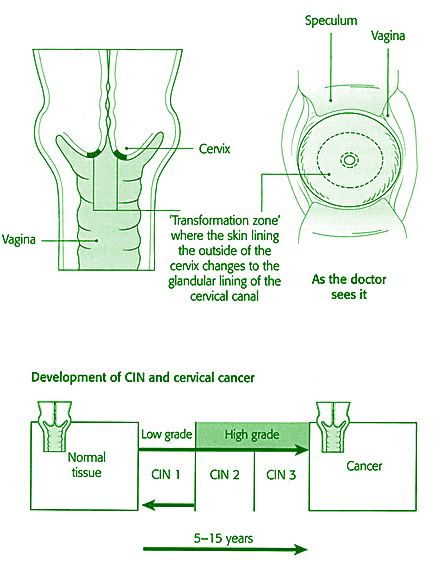|
CIN
• Cervical intraepithelial neoplasia (CIN for short) is a pre cancerous
change in the part of the cervix that juts into the vagina. This area,
where the skin lining the cervix changes to the glandular lining of
the cervical canal, is called the 'transformation zone'.
• A smear test that shows abnormal cells ('dyskaryosis') means
GIN may be present on the cervix. Your gynaecologist will examine the
cervix with a special microscope called a colposcope. If CIN is present,
certain changes in the skin over the cervix show up after applying a
dilute vinegar solution. CIN can only be diagnosed by taking a sample
of tissue (a biopsy) from the cervix for microscopic examination.
• CIN is graded as 1, 2 or 3, depending on how the tissue looks
under a microscope. Even CIN 3 is not cancer and is easily treated.
However, if CIN 2 or 3 is not treated, there is a risk that cancer will
develop. CIN 2 and 3 are called high-grade GIN.
• CIN 1 (low-grade GIN) is a minor pre-cancerous change that often
goes away without treatment. It is not usually necessary to treat (remove
or destroy) CIN 1 at first diagnosis. However, in some women, it slowly
progresses to high-grade GIN.
• If you have CIN 1, it is very important to monitor your cervix
with colposcopy and smear tests every 6 months or so. If the CIN 1 does
not go away after 1-2 years, you may be offered treatment. If high-grade
CIN (CIN 2 or 3) develops, you will definitely need treatment.
|
|
 |




